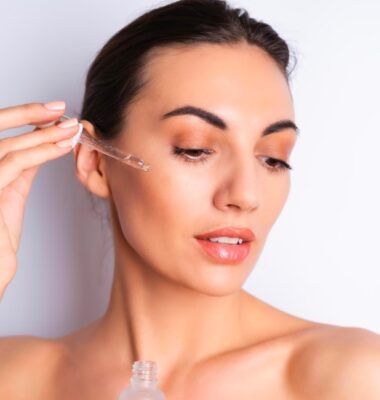From Pearly Whites to Strong Gums: Here’s What Healthy Teeth Truly Look Like
Fact checked
By Azrung Fayaz, Doctor of Internal Medicine | MBBS, FCPS, MRCP
Last Updated on June 9th, 2025 / Published on May 20, 2025

We’ve all seen those media portrayals of perfect pearly white teeth. They make us question our smiles.
But is that dazzling white shade on the screen a sign of healthy teeth?
Advertisements try to paint an ideal image. They feed on everyone’s wish for whiter teeth. It’s why people with good dental health often wish their teeth were whiter. But white teeth are not a sign of healthy teeth.
Dive in as we break down the true marks of healthy teeth and how you can achieve them.
What Do Healthy Teeth Really Look Like?
Healthy teeth don’t always have to be a perfect shade of white. But good dental health does have the following clear signs:
- Glossy, smooth enamel (outer covering)1
- Uniformly colored teeth
- No gum or tooth stains
- Normal-sized teeth
- Evenly spaced teeth
- No holes or dark spots on teeth or gums
- Pink, firm gums2
- Gums that aren’t swollen or red2
Healthy Teeth Color: Are White Teeth Always A Sign of Health?
White teeth don’t mean healthy teeth. Conversely, your tooth color can change even when your dental health is excellent. Here’s why:
- Genetics: You inherit your tooth color.
- Age: Teeth darken over time.3
- Fluoride: Fluoride toothpaste can change your tooth color.
- Diet: Berries, tea, and wine can stain teeth.
Why is Maintaining a Strong and Healthy Enamel Crucial?
The enamel is your tooth’s tough outer layer. Keeping it in top shape is vital to oral health because it:
- Enables your teeth to withstand biting and chewing pressures.4
- Prevents food and plaque accumulation (due to its smooth surface).5
- Resists bacterial acids, preventing teeth erosion.
- Shields the sensitive teeth structures underneath.
- Prevents the entry of bacteria into the teeth and bloodstream.
Healthy vs Unhealthy Teeth: How Do Healthy and Unhealthy Teeth Differ?
Some dental problems are not visible. They might be between teeth or under the gums. So, by the time you see them, they’ve already grown.
Luckily, healthy and unhealthy teeth have some tell-tale signs. These allow you to recognize problems before you can see them.
Here’s a summary:
| Signs of healthy teeth | Early signs of dental problems |
| Strong enamelNo pain or sensitivity to hot and cold foodsNo visible cavitiesPink and firm gumsFresh breath | Weak or damaged enamelPain or sensitivity to hot and coldVisible cavities Swollen, red, or receding gumsBad breath |
What Does the Early Stage of a Cavity Look Like?

Cavities are holes or pits in your teeth.6
They form when mouth bacteria make excess acid that erodes the enamel. As a result, holes form in the tooth.7
Cavity formation is a multi-step process. Your teeth go through distinctive stages that you can recognize. Here’s an overview:
- First, white, chalky areas appear.8
- Then, the teeth become dull as the enamel decays.9
- Following this, holes begin to appear that deepen with time.10
- Lastly, the teeth swell, bumps appear on the gums, and pockets of pus may form.11
How Important Are Gums in Dental Health?

Gum health is vital to dental health. Without healthy gums, teeth suffer. Studies12 show that 14.4% of people lose teeth due to gum problems.
Gums serve three important functions. They:
- Anchor your teeth. This prevents tooth loss.
- Cushion your teeth. This softens the pressure on your teeth and prevents damage.
- Keep bacteria from entering the bloodstream. This prevents infections.13
Systemic Benefits of Healthy Teeth: Why Does Dental Health Go Beyond Aesthetics?
Dental health is not just about how your teeth look when smiling. Your oral health affects your entire body.
For example, studies show that:

- Poor oral health increases heart disease risk. Conversely, regular dental check-ups can reduce heart disease chances by 14%.14
- Bad gums and missing teeth increase dementia risk.15
- Dental caries can cause high blood sugar and diabetes.16
- Cavities increase asthma17 and stroke risk.18
Inflammation from dental issues is the cause of this.19 It produces chemicals that the blood carries to different parts of the body. There, it sets off a chain reaction, leading to complications.
What Practices Can Help You Maintain Strong, Healthy Teeth and Gums?
Daily oral care is vital to fewer dental problems.
Studies20 show that 78% of people who don’t brush daily develop cavities. Likewise, not brushing your teeth before bed doubles the cavity risk.21
Luckily, you can adopt the following simple practices for better dental health:
- Brush twice daily.22 This removes food and plaque.23
- Floss daily24: Toothbrush bristles can’t clean the gaps between your teeth. But flossing can.
- Use mouthwash. It kills bacteria and reduces tooth decay by up to 37%.25
- Stay hydrated. Water helps neutralize mouth acids and lowers gum disease and cavity risk.26
- Limit sugary foods and drinks. Instead, eat more fruits and vegetables. These neutralize harmful acids and clean the mouth.27
The Impact of Dental Check-ups on Healthier Teeth
Regular dentist visits lead to better dental health. For example, a study28 including 3200 participants illustrates this. Only 3% of people who got regular dental checks reported poor oral health. This number was five times greater for those who see the dentist only when in trouble.
Here’s why regular dentist visits are vital:
- They help catch dental issues before they become visible. So you can address them before the problem spirals out of control.
- Professional cleanings reduce cavity and gum infection risk.29 This is because they get rid of hard-to-remove plaque.
- Fluoride treatments toughen up the enamel. This is vital to oral health.
Takeaway
Many believe that the ideal healthy teeth have a bright white shade. This belief can lead to a skewed view of oral health.
True dental health is more than just teeth color. It includes enamel, gums, and mouth hygiene.
Also, remember a healthy mouth is vital to health. So, see beyond the ads and focus on what truly matters.
Luckily, simple habits and regular dentist visits can boost your dental health. This, as a result, can improve your overall well-being.
Sources
1. Gil-Bona A, Bidlack FB. Tooth Enamel and its Dynamic Protein Matrix. Int J Mol Sci. 2020;21(12). doi:10.3390/ijms21124458
2. Rathee M, Jain P. Gingivitis. In: StatPearls [Internet]. StatPearls Publishing; 2023.
3. Gómez-Polo C, Montero J, Gómez-Polo M, de Parga JA, Celemin-Viñuela A. Natural Tooth Color Estimation Based on Age and Gender. J Prosthodont. 2017;26(2). doi:10.1111/jopr.12345
5. Gil-Bona A, Bidlack FB. Tooth Enamel and its Dynamic Protein Matrix. Int J Mol Sci. 2020;21(12). doi:10.3390/ijms21124458
6. Rathee M, Sapra A. Dental Caries. In: StatPearls [Internet]. StatPearls Publishing; 2023.
8. Kashyap PR, Kaur M, Mahadevan G. Prevalence of white spot lesions in children up to 71 months of age in Gujarat state. J Indian Soc Pedod Prev Dent. 2023;41(1). doi:10.4103/jisppd.jisppd_64_23
9. Carvalho TS, Baumann T, Lussi A. Does erosion progress differently on teeth already presenting clinical signs of erosive tooth wear than on sound teeth? An in vitro pilot trial. BMC Oral Health. 2017;17. doi:10.1186/s12903-016-0231-y
12. Carvalho R, Botelho J, Machado V, Mascarenhas P, Alcoforado G, Mendes JJ, et al. Predictors of tooth loss during long-term periodontal maintenance: An updated systematic review. J Clin Periodontol. 2021;48(8). doi:10.1111/jcpe.13488
13. Kinane DF, Stathopoulou PG, Papapanou PN. Periodontal diseases. Nature reviews Disease primers. 2017;3. doi:10.1038/nrdp.2017.38
14. Park SY, Kim SH, Kang SH, Yoon CH, Lee HJ, Yun PY, et al. Improved oral hygiene care attenuates the cardiovascular risk of oral health disease: a population-based study from Korea. Eur Heart J. 2019;40(14). doi:10.1093/eurheartj/ehy836
15. Yoo JE, Huh Y, Park SH, Han K, Park HS, Cho KH, et al. Association between Dental Diseases and Oral Hygiene Care and the Risk of Dementia: A Retrospective Cohort Study. J Am Med Dir Assoc. Published online September 12, 2023. doi:10.1016/j.jamda.2023.08.011
16. Sanz M, Ceriello A, Buysschaert M, Chapple I, Demmer RT, Graziani F, et al. Scientific evidence on the links between periodontal diseases and diabetes: Consensus report and guidelines of the joint workshop on periodontal diseases and diabetes by the International diabetes Federation and the European Federation of Periodontology. Diabetes Res Clin Pract. 2018;137. doi:10.1016/j.diabres.2017.12.001
17. Zhai Y, Gao L, Yu G. Does dental caries play a role on the asthma development?-systematic review and meta-analysis. J Clin Pediatr Dent. 2023;47(4). doi:10.22514/jocpd.2023.040
18. Chang Y, Woo HG, Lee JS, Song TJ. Better oral hygiene is associated with lower risk of stroke. J Periodontol. 2021;92(1). doi:10.1002/JPER.20-0053
19. Sabbah W, Folayan MO, El Tantawi M. The Link between Oral and General Health. Int J Dent. 2019;2019. doi:10.1155/2019/7862923
20. Cakar T, Harrison-Barry L, Pukallus ML, Kazoullis S, Seow WK. Caries experience of children in primary schools with long-term tooth brushing programs: A pilot Australian study. Int J Dent Hyg. 2018;16(2). doi:10.1111/idh.12275
22. Oral Health Tips. Published May 3, 2023. https://www.cdc.gov/oralhealth/basics/adult-oral-health/tips.html#:~:text=Oral%20Health%20Tips,-Oral%20Health%20Tips&text=Practice%20good%20oral%20hygiene.,not%20use%20any%20tobacco%20products. Accessed October 15, 2023
23. Shirzaee N, Saied-Moallemi Z, Mohammadi M, Okati-Aliabad H. Toothbrushing and related factors among high school students in the Southeast of Iran: A cross-sectional study. Int J Dent Hyg. 2021;19(4). doi:10.1111/idh.12534
24. Fleming EB, Nguyen D, Afful J, Carroll, Woods PD. Prevalence of daily flossing among adults by selected risk factors for periodontal disease-United States, 2011-2014. J Periodontol. 2018;89(8). doi:10.1002/JPER.17-0572
27. Tenelanda-López D, Valdivia-Moral P, Castro-Sánchez M. Eating Habits and Their Relationship to Oral Health. Nutrients. 2020;12(9). doi:10.3390/nu12092619
28. Afonso-Souza G, Nadanovsky P, Chor D, Faerstein E, Werneck GL, Lopes CS. Association between routine visits for dental checkup and self-perceived oral health in an adult population in Rio de Janeiro: the Pró-Saúde Study. Community Dent Oral Epidemiol. 2007;35(5). doi:10.1111/j.1600-0528.2006.00343.x
29. Barbe AG, Kottmann HE, Hamacher S, Derman SHM, Noack MJ. Efficacy and acceptance of professional dental cleaning among nursing home residents. Clin Oral Investig. 2019;23(2). doi:10.1007/s00784-018-2487-x





